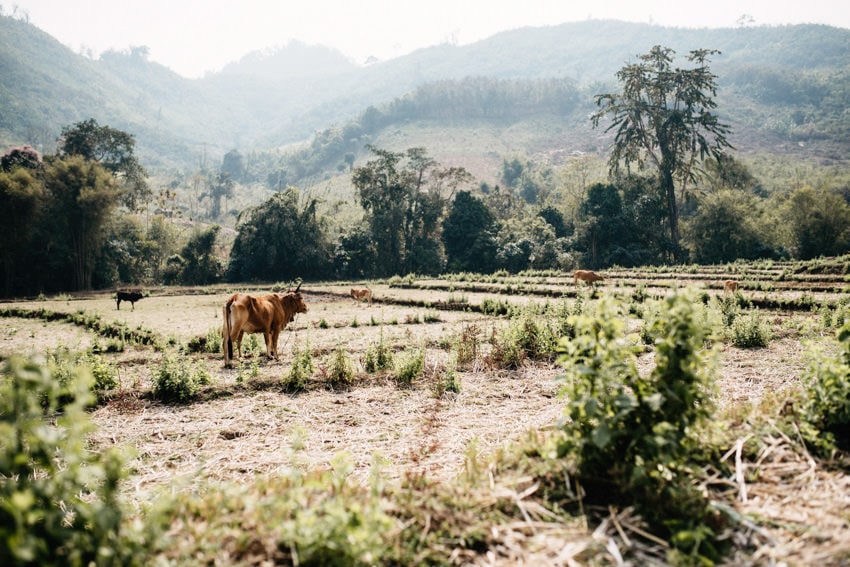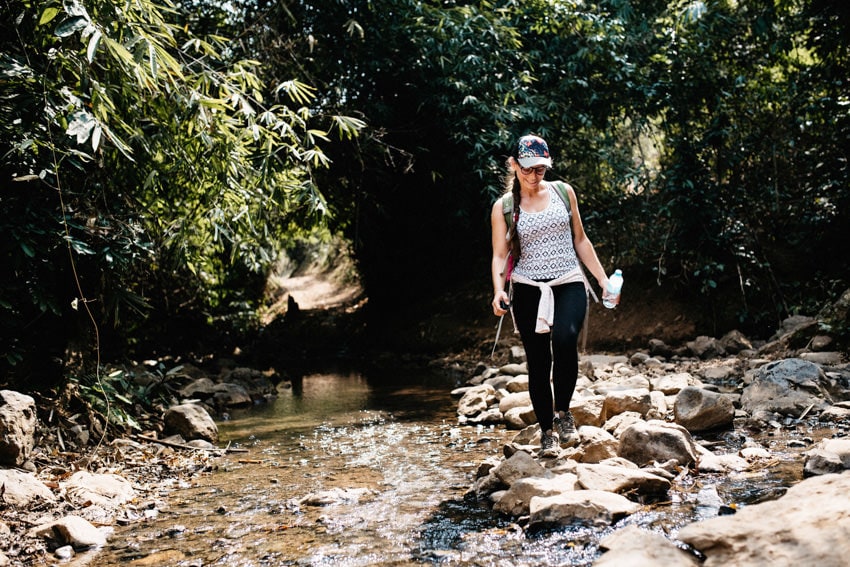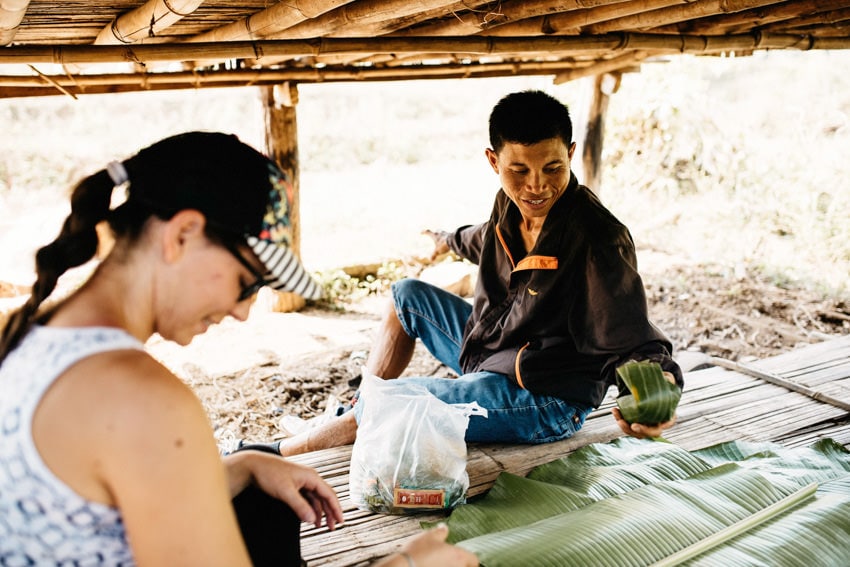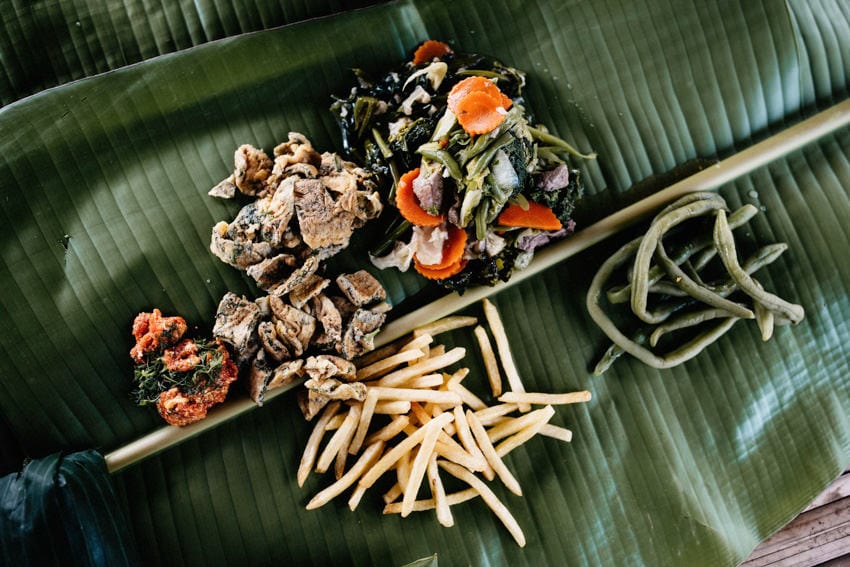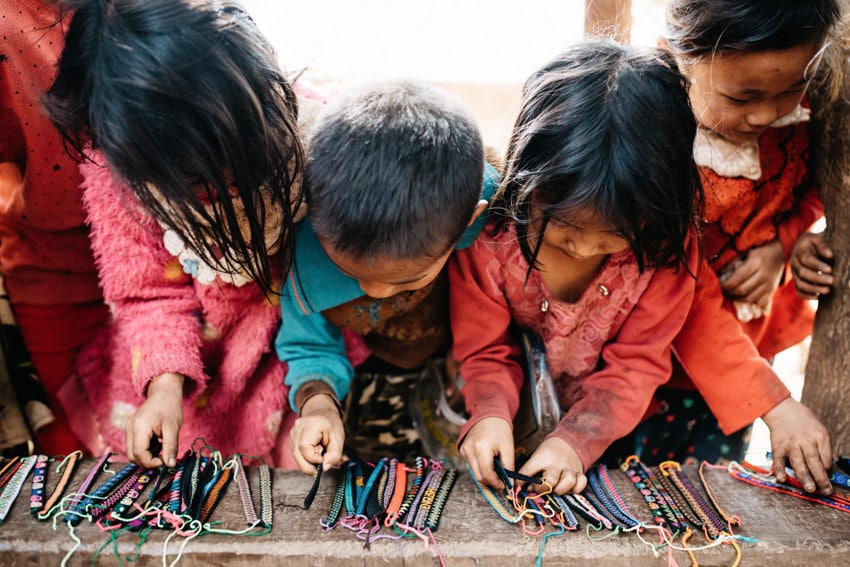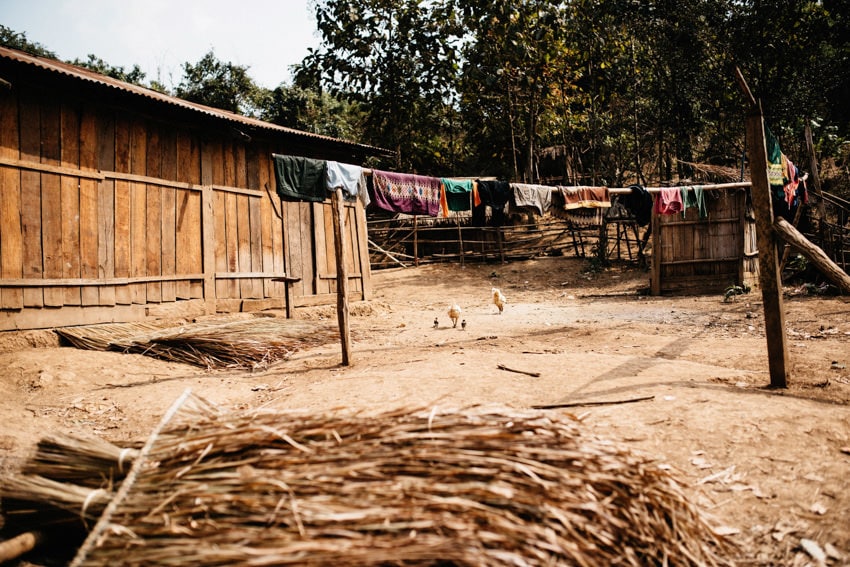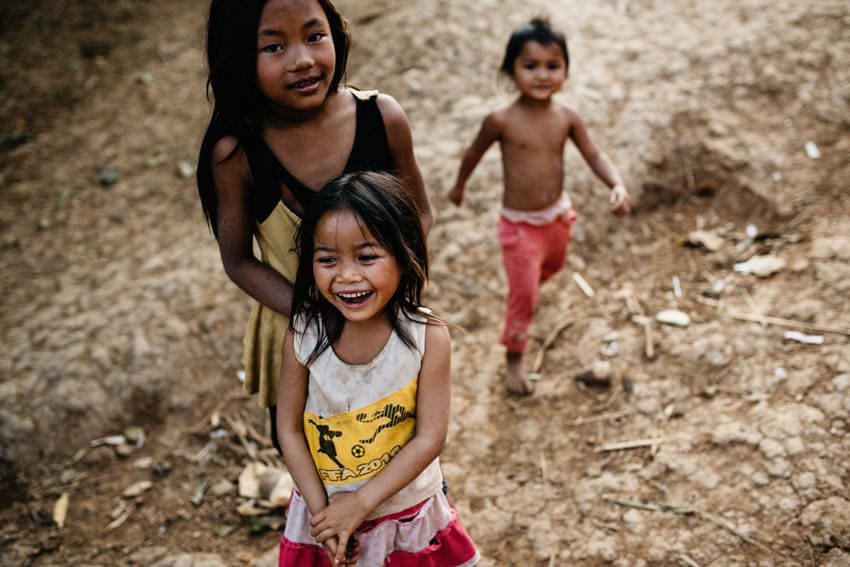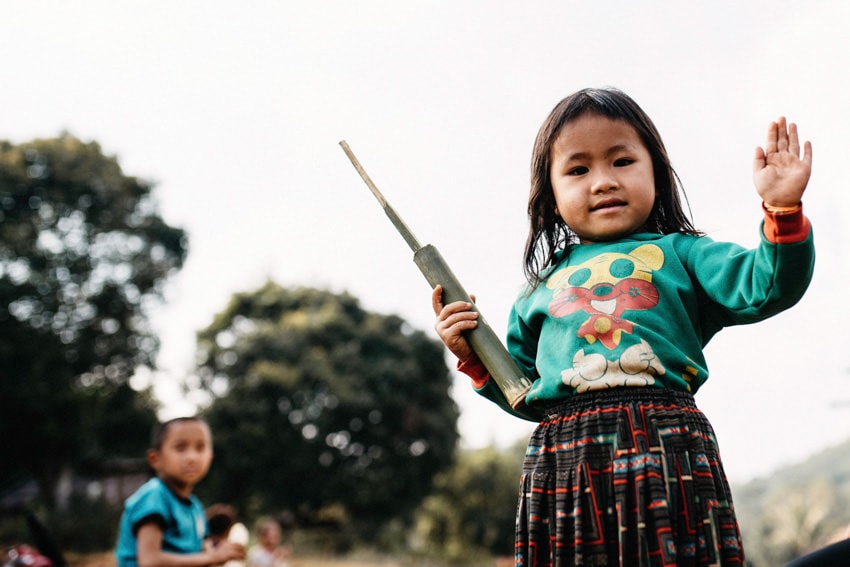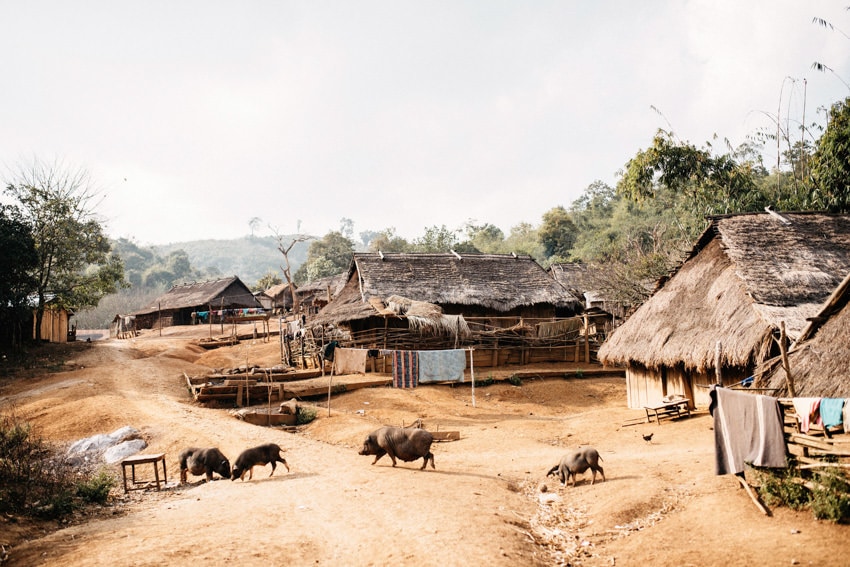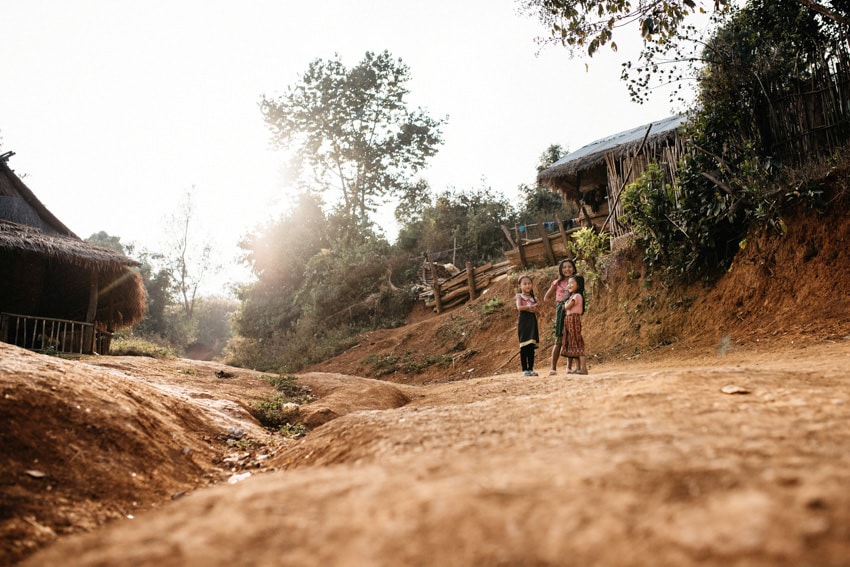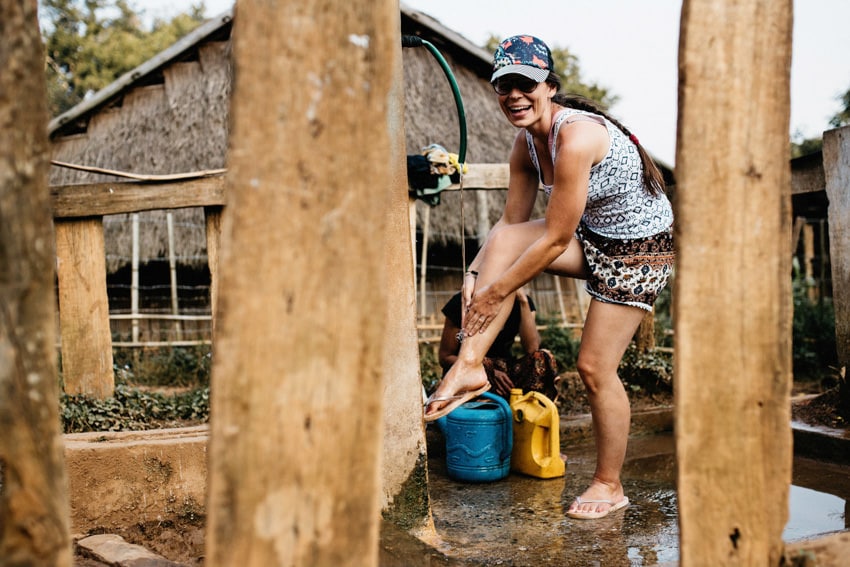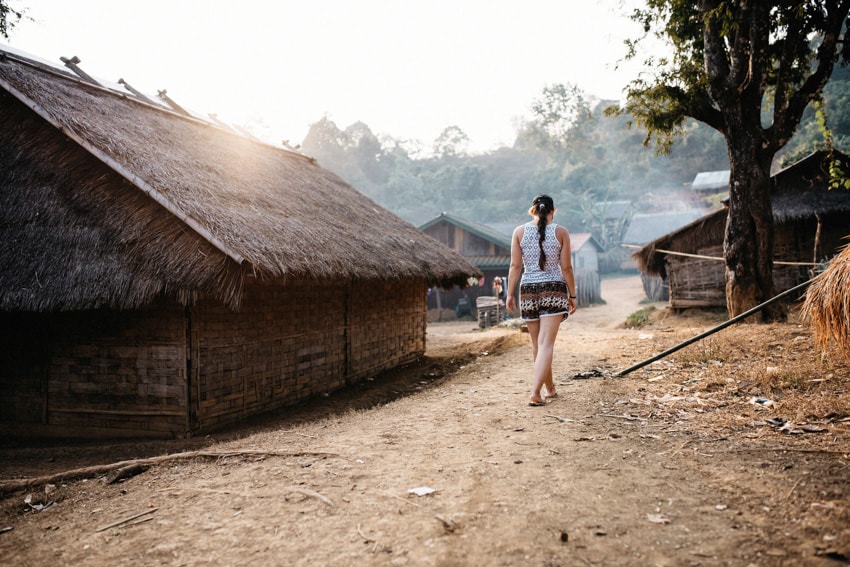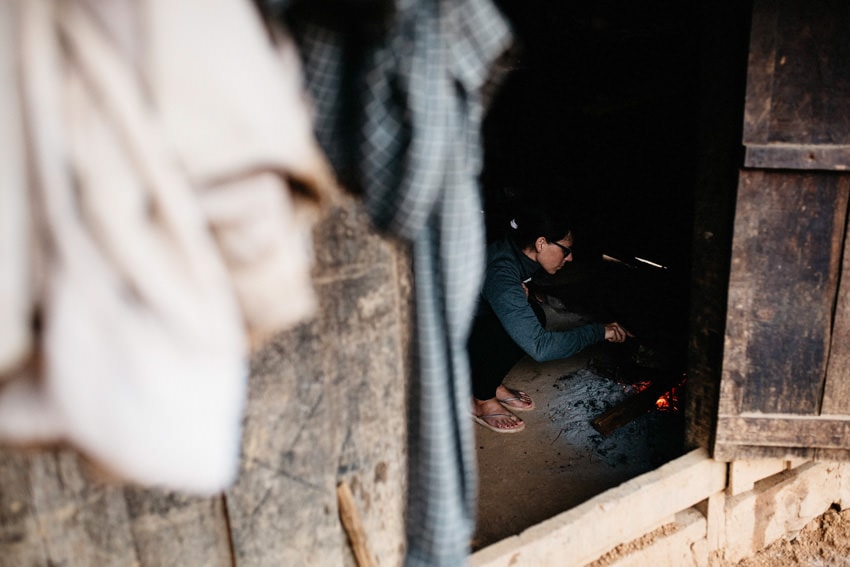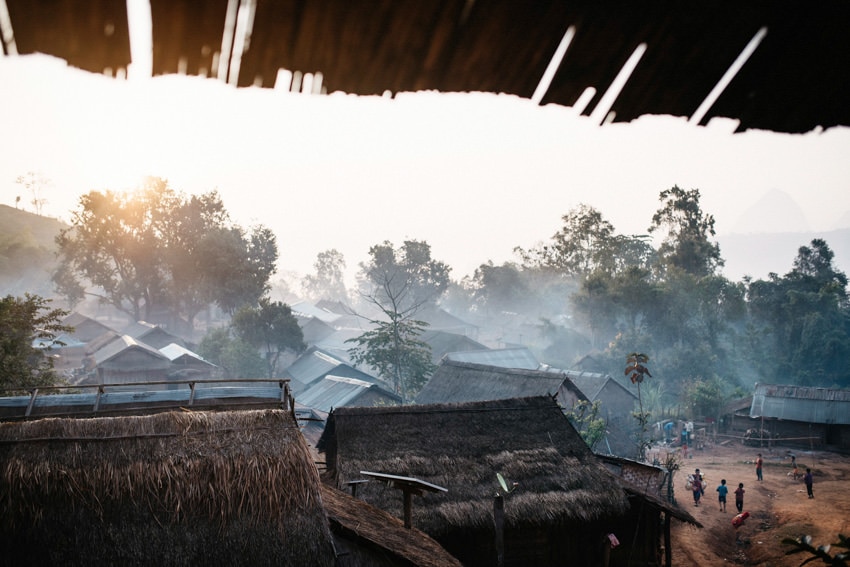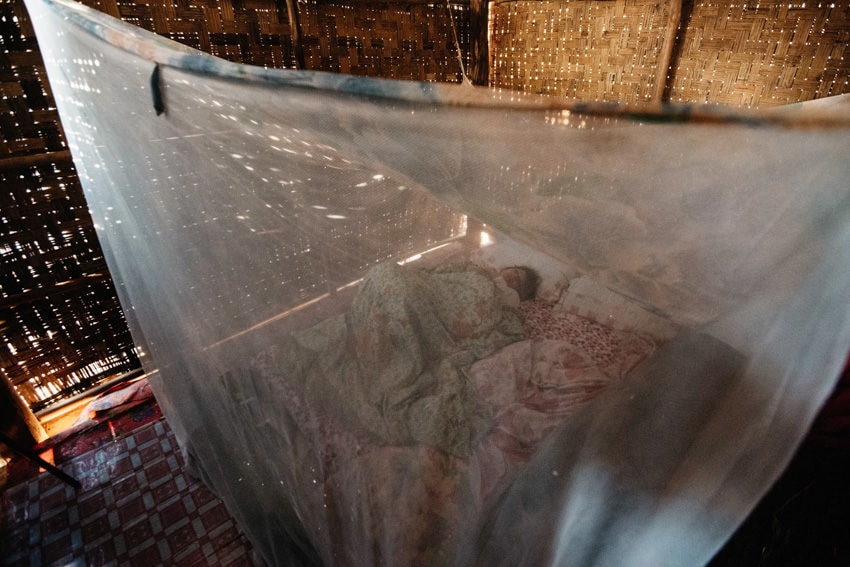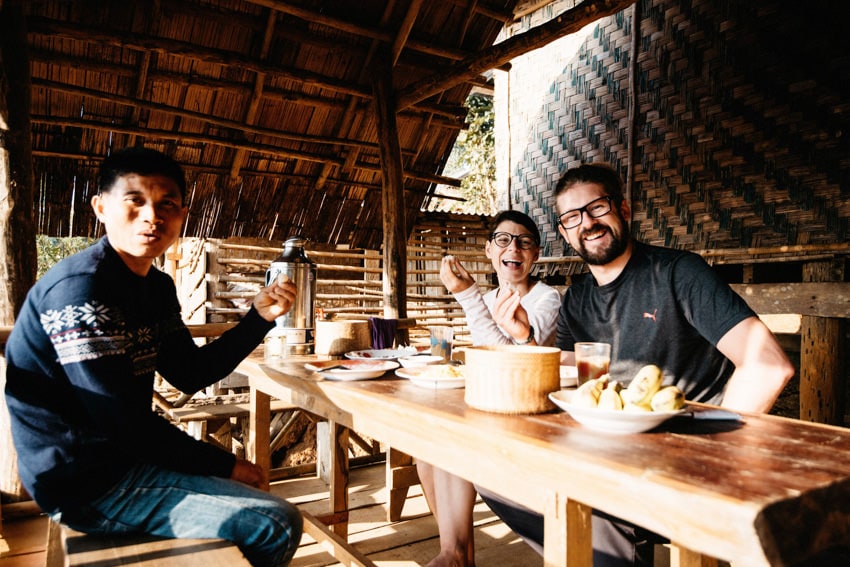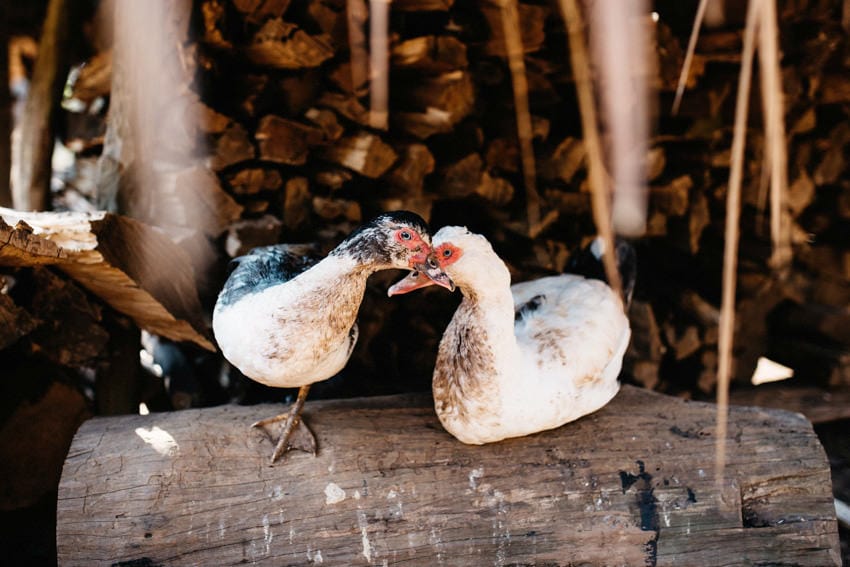Originally, we wanted to go to Nong Kiaw from Luang Prabang to do some trekking and visit traditional villages. As we did the Gibbon Experience spontaneously, we ran out of time and were, therefore, looking for a comparable experience around Luang Prabang. We found it with the “Hmong and Khmu Village Trek” with Green Discovery Tours. We booked the 2 Day/1 Night trek as we really wanted to spend one night in a local village. We researched on the internet before and as we liked Green Discovery Tours best, we booked with them. Prices do not differ a lot – it was just the tour operator we liked best regarding the website, the communication by e-mail and the office in Luang Prabang.
Cost of the Tour: 105 USD per person
We had a private tour – so, just the 2 of us had booked the tour on the date we went. They have a private tour that costs 150 USD per person. If you tell them that you don’t mind other people joining the group, they will try to sell the tour also to other people on the same date and if they don’t, you get a private tour but for the price of the group tour.
What’s included:
- Pick-Up and Drop-Off at your accommodation in LP
- Guide for 2 days
- Meals: 2 lunches, 1 dinner, 1 breakfast
- Bottled Water
Difficulty of the trek: Moderate – it includes steep parts and also some parts downhill through the tick jungle of Laos, it is very slippery and sometimes difficult to manage (especially when it is hot, the steep parts get very exhausting).
Best Time to do the Trek: October – February. During the rainy season – which goes from June to August – it is very uncomfortable and partly dangerous because it is so slippery that they often have to cancel the tour. In March it also becomes partly uncomfortable as the farmers start to burn down the woods on their fields to prepare everything for farming – so it is very hot and there is a lot of smoke.
Day 1
At the first day, they picked us up at 8:45 AM from our hostel in Luang Prabang. The drive to the start of the trek in the north of Luang Prabang took about 1 hour.
The first part of the trek was rather easy: we walked along rice fields, through teak woods and crossed little rivers. The path was pretty shadowy as there were many trees along the way – which was nice because it was a very sunny day. We enjoyed a very delicious picnic lunch at a hut on a local farm (the huts are built by the local farmers to rest and eat while they spend their time on the farm) – our guide cut a banana leaf off a tree which we used as a “table”. We had vegetables, French Fries, scrambled egg with cilantro, fried green beans and of course, sticky rice (every meal in Laos contains sticky rice).
Ban Phathueng
After lunch, we trekked for about 30 minutes more until we reached the 1st village – Ban Phathueng, a Hmong Village. About 40 families live in this village – together with their children and many many cows, pigs and chickens, the village is a pretty lively place although there is not a lot going on.
We spent about 1 hour in the village to walk through it and observe the daily life of the village people. We watched the kids of the village play at the school’s playground (on Saturday – they even go to school voluntarily on the weekend because it is nice to play there), watched a lady making a roof, saw a mother washing the clothes with her two daughters and made the acquaintance of all the villages cows, pigs and chickens.
Taking Pictures of Locals in Laos
We took lots of pictures – it is just very important to always ask them if it is ok to take a picture – some of them really don’t like it and will refuse but for most, it is ok. Especially the children love being photographed – but only if you show them the picture afterwards.
Our Overnight Stay in a Khmu Village
From this village to the village where we spent the night, it was another 1,5 hours of trekking. It had gotten very hot by the time we started the last part and there was almost no shadow anymore. The way up to the village was pretty steep and we were just looking forward to relax and have dinner. In order to keep us motivated, our guide tried really hard to entertain us: so, he decided to go and hunt for a banana flower for our dinner. Each banana tree also has a purple banana flower (in South East Asia it is used for cooking or salads in many countries) – he soon spotted one hanging down from the high tree. As he couldn’t get it by just grabbing after it, he had to find another way. He went into the bushes to find a stick and threw the stick after the flower. Unfortunately, it landed somewhere in the bush, so he had to go into the bush again to find it. We didn’t get to try it though – because the family that hosted us for the night ate it for dinner.
Eventually, we reached our destination of the day: Ban Mokchong 1, a Khmu village with about 53 families. We moved into our domicile for the night – a bamboo hut built on stilts with two mattresses, two pillows, two blankets all covered in a mosquito net. The bathroom was outside – it was basically a hole in the ground – in order to flush we had to pour water from a bucket into the hole. We loved it because it was authentic and not made better or luxurious for the tourists. We also had to use the shower of the local people – and with the local people. There are only 3 showers in the village and all the inhabitants have to shower there. So, we had to line up in order to get washed. The bad news is that they don’t use the shower only for showering, they also fill up their water canisters there and do their laundry. Our house had a really nice terrace from which was had a panoramic view over the entire village, really nice.
After a little walk through the village and a very quick shower, we helped our guide Mone to prepare dinner. As we did a cooking class in Vietnam and liked it very much, we were happy that we also got a chance to learn how to cook the Laotian way. Bianca cooked fried pork with cabbage and fried green beans over the open fire, the sticky rice was already prepared (it is cooked by the local families twice a day – in the morning and in the evening and it takes a few hours to cook/steam it in the typical bamboo basket). It was served with green tea and chili sauce. It was very delicious – we learnt that the key ingredients of every Laotian meal are ginger, garlic and cilantro (mint and lemongrass are also commonly used). After dinner, we went to bed – very exhausted from the impressions, the heat and the trekking.
Day 2
The next morning, we the cock of the village gave us a wake-up call at 4:30 AM. Luckily, we were able to fall asleep again. We had breakfast on our terrace (egg, grilled pork and of course, sticky rice) before we continued trekking. We started the trek with a little walk around the village where we spent the night. Then we continued to a village that is just 15 minutes by foot away – Ban Mokchong 2 (so, it has the same name like the village where we stayed overnight, just a different number). Ban Mokchong 1 and 2 are very close to each other and they have one common school for all kids of both villages (the school was built by the government just recently and is located in Ban Mokchong 1).
The way to the second village of the day was pretty difficult and tiring. The first part was very steep and without any shadow, very hot because the sun was burning down like hell. The second part of the way led through dense bamboo forest. At some spots, the path was not even 1 meter broad and most of the time, we had to walk down the very steep and slippery way. At some places, the bamboo was so dense that Mone – our guide – had to cut it first with his machete so we could pass. Halfway, we took a short break in a little farm hut and after about 2 hours, we arrived in the next village.
Hour Ka
Hour Ka is a Khmu Village and the most developed we have visited. Its development is reflected in the houses – which are actually built from bricks. The reason for the development is the tractor road that is located close by – enabling the village people to transport bricks and other stuff to the village. The road is not a road as the average 1st world person would imagine a road – it is an unpaved, sandy road that is hard to manage in rainy season. For Laotian standards, however, it is a good road enabling good to be brought to the village. Many houses even have 2 storys and nice balconies.
We enjoyed our lunch in Hour Ka and then trekked the last stage of our journey – along a straight road, through some rivers – about 1,5 hours until we reached the car that brought us back to Luang Prabang.
Life in the Laotian Villages
Economy
Economy-wise, these villages function like big marketplaces. Families earn money by selling goods (that they get from farming) for money. People in the villages trade among each other – sometimes they also go to the markets in the nearby cities (especially Luang Prabang) to sell the exceeding amounts of goods they do not need for themselves. Farming mainly takes place in the rainy season (in dry season the farms are just prepared for farming). During this time, families live on the farms as going there and back to the village every day is just too far. Typical goods trades are vegetables, fruit and meat (pork, chicken and cow). Cows are only kept for the meat – they are never melted, so the milk is not used.
Culture
Every village has a chief – he / she is elected by the inhabitants of the very village every 3 years. The chief is employed by the government and responsible for different tasks e.g. collecting taxes. Every trade that is make is subject to taxes and the chief has to collect them and make sure they reach the government. The chief only earns an average of 20 USD per month for his duties – so it is more a prestige thing than an income-generating activity. Families usually stay in town and don’t move away, also children usually stay in their home town that they grew up in. Life and death is celebrated and represents an important part of the culture – after the birth of each baby, a baby shower takes place and dead people are buried (not burnt!). A death is only betrauert for a certain time, after this period, the village celebrates. The Hmong and Khmu are not Buddhists, they believe in 5 spirits.
Health
If somebody is sick, they consult the Shaman of the village. If he is not available of the village does not have a shaman, they buy medication when sellers from the city pass by (usually every week to at least once a month). The government started a special midwifery program some years ago – the aim is that every village has one person specialized in helping women during birth.
Hygiene: Not every house has an own shower – usually there are some showers (around 3 for 50 houses) that are shared by the people of the village. So, showering and washing clothes is usually connected to lining up and waiting. Animals like pigs, chickens and dogs share their living space with the people – or vice versa.
Education
Every town has a primary school – sometimes two villages share one school. Every child gets basic education. Secondary schools are located in the cities – so, if children go there, they stay in the village the entire week (which many families cannot afford). They walk home on Friday afternoon and back on Sunday after breakfast. The walk takes a few hours.
Entertainment: Shopping takes place in the village – people come from the cities and bring goods for purchase (clothes, blankets, medicine, …). Almost every house has satellite TV and children play with everything they find on the ground. Most “entertainment” is people talking to each other, doing arts and crafts (like weaving, sewing, embroidery) and caring about the house and the animals.
Review of Green Discovery Tours
Although the tour is rather expensive, you should not consider doing it individually. The tracks are very hard to find (basically impossible to see) and you should not go by yourself.
There are a few companies that offer village tours – Green Discovery and Tiger Trail being the biggest and most famous. As we liked the structured website of Green Discovery Tours and the e-mail communication, we went with them. We don’t think, however, that there are huge quality differences.
Our Overnight Stays before and after the tour
Downtown Backpacker Hostel and the City Backpacker Hostel
If both of them are available when you try to book, definately opt for the DownTown Backpackers Hostel as it is way more comfortable and has bigger rooms.


